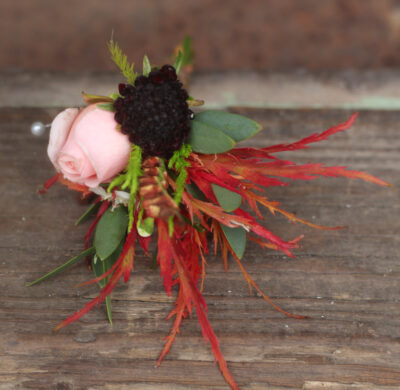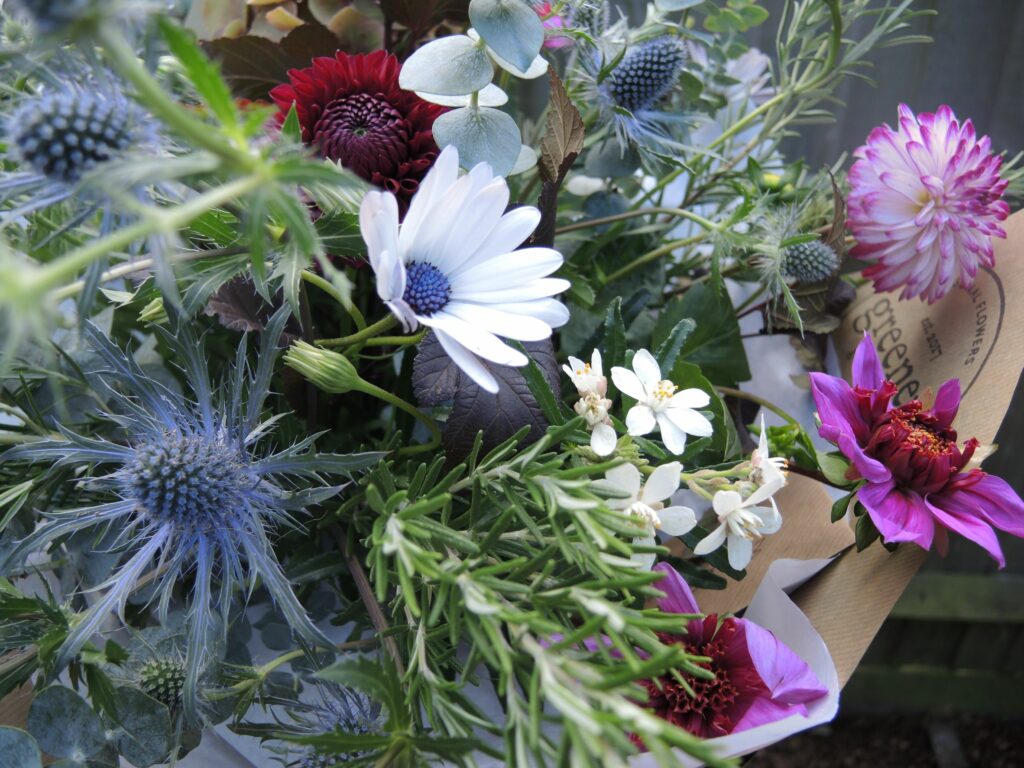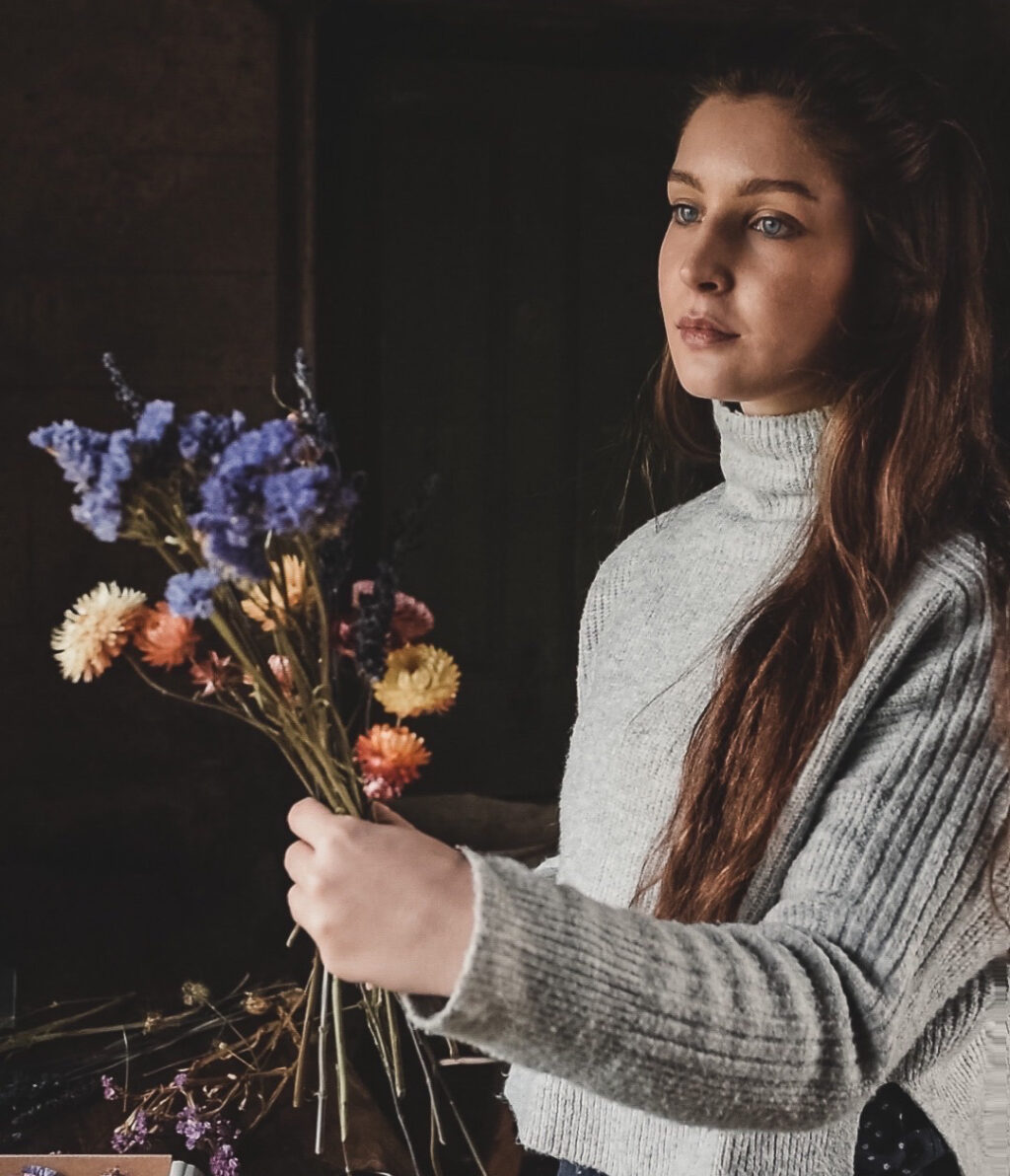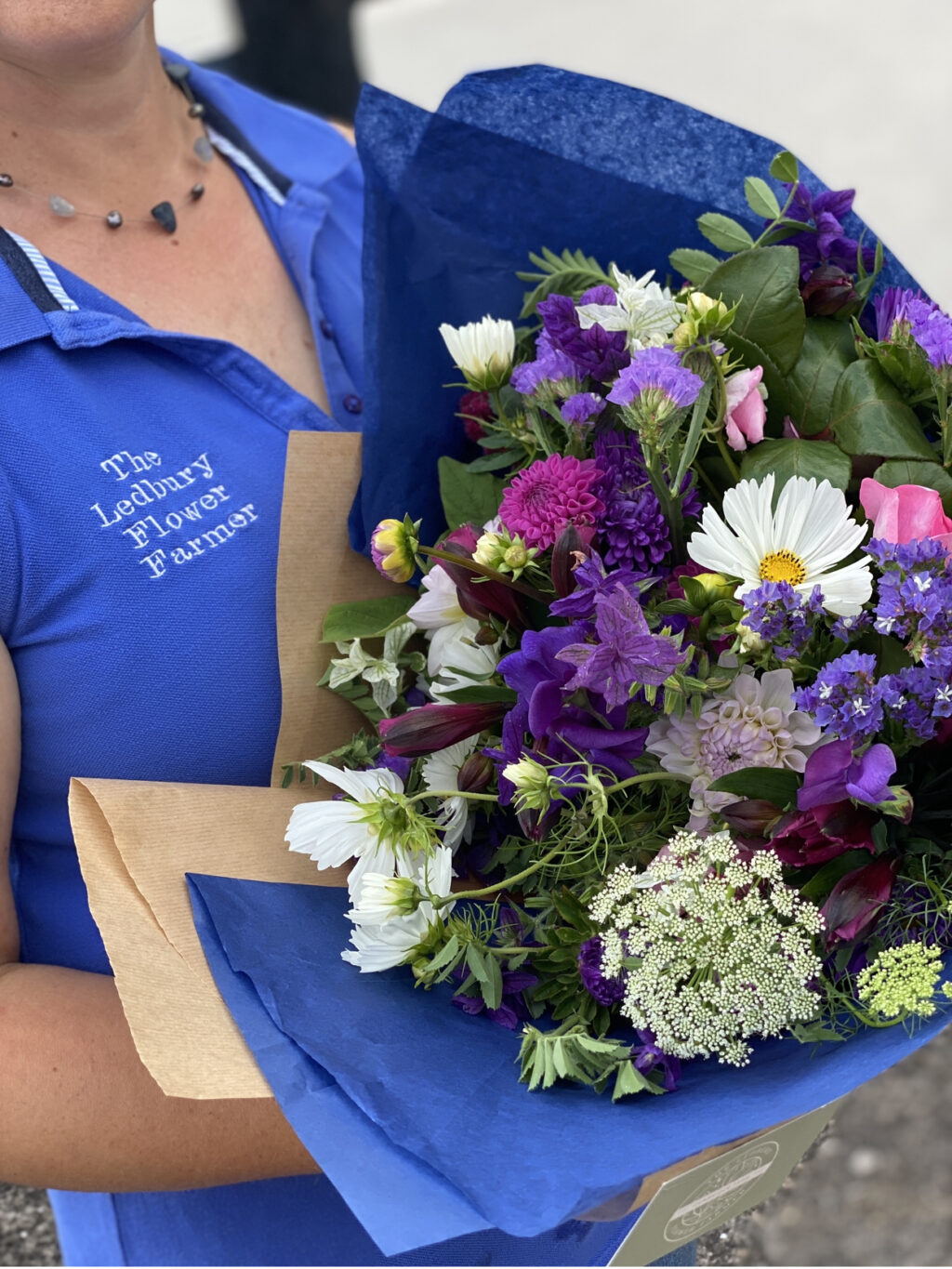Autumn and winter wedding flowers
Carole Patilla of Tuckshop Flowers explores what ‘seasonal flowers’ means for weddings which fall outside the spring and summer growing season in the UK.
As the end of September arrives, flower farmers can be found in crumpled heaps across the country after a busy flower growing and wedding season – especially this year when everyone who’d been waiting so long to celebrate due to lockdown has queued up to do so with gusto from July and right through September. Even now I’m still getting late enquiries for weddings in the next few weeks and also for December: it seems the rush to wed is not yet over!
I love it when I’m asked specifically for ‘seasonal flowers’ as this means that my arrangements can reflect what’s going on in the natural world and will be true one offs – the weather, the flowers, foliage and my own inspiration will never align in exactly the the same way again and I think this makes properly seasonal flowers truly special.

However, as flower farmers, when autumn arrives we start to put our plots to bed and to plan for the next growing year. Our plots experience the same seasons as any garden. From mid September to October, we still have flowers but in less abundance: dahlias, asters, cosmos, scabious, helichrysums, the odd precious rose…. But as the weather tends more towards blustery cold winds, sharp showers, frosts and cooler temperatures, the quality as well as the quantity of outdoor grown flowers starts to drop as they are buffeted by the elements. At this point, many flower farmers shut up shop until spring arrives because they only want to send out beautiful premium blooms of which they can be rightly proud. However, those lucky enough to have plentiful poly tunnel space to protect their floral charges can keep cutting for a few weeks longer and start to enjoy a late crop of chrysanthemums for one final flowery flourish.
From October, my own flower supply in Birmingham becomes very much touch and go according to when first frosts arrive. In other parts of the country, this date may be earlier or later (as far as these things can ever be forecast in these times of climate change). Late season flower availability is highly unpredictable – it’s tricky enough at the best of times as anyone who has tried gardening and growing knows! This is why flower farmers often adopt a more open-ended and flexible approach to floristry that allows them (and you) to ‘go with the flow’ and to be inspired by what’s available rather than guaranteeing specific varieties. Turning foliage can be beautiful; eucalyptus is at its prime in the colder months; berries, hips and haws can add splashes of brilliant colour; the rare roses that are thrown out sparsely throughout winter may be more weatherbeaten but are treasure nonetheless; evergreens and pine cones can be perfect and evocative for winter weddings.

After September, if you want to work with only locally grown ingredients, you’ll need to be completely flexible and open in order to make this possible. This open-mindedness includes embracing the use of foliage, textures and dried ingredients if freshly picked blooms are in limited supply.
For fresh flowers in quantity during autumn and winter, British flower florists usually need to look to other sources of supply in addition to their plots and hedgerows. In the colder months, the main commercially available indoor grown British flowers include tulips, narcissi, alstroemeria, anemones and ranunculus – but with the exception of alstroemeria, not all are available all of the time. These blooms can all add flowery impact to arrangements and be combined with the local ingredients we find growing around us. BUT however hard we may all wish for billowing heaps of roses, peonies and other divas, we aren’t going to find them UK grown beyond the their natural summer season, even though you’ll find imported roses in the supermarket year round. If you want to include the use of imported flowers in the colder months to widen the range of material available to achieve your aesthetic goals you’ll need to speak to your chosen florist to find out what their approach is to this issue. There are no rights and wrongs here, but it’s important that both you and your florist are clear and agree on the approach to be taken.
So if you’re an autumn or winter couple and really do want to work with solely seasonal ingredients, it’s best not to start with particular designs or colours in mind. If you are choosing someone who grows flowers to do your wedding, let them start instead with what is looking most gorgeous (in terms of flower/foliage/texture/interest) at your time of year and base arrangements around that. Be inspired by what’s available, rather than a preconceived idea of your florals. Working this way, you simply have to trust your grower: there are no guarantees what the ingredients will be, but they’ll always be unique, speak of a time, place and season, and make your wedding truly special.


